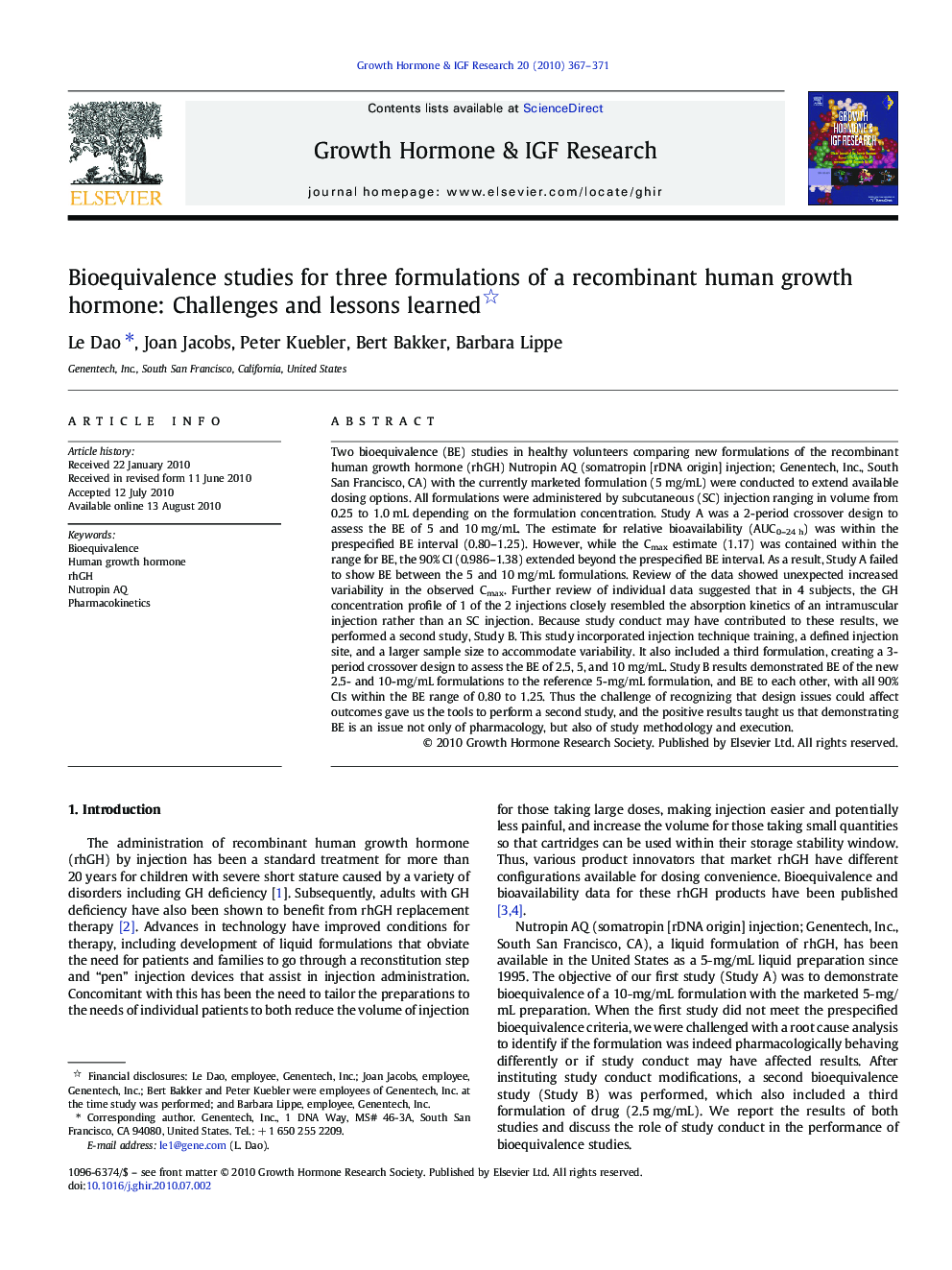| کد مقاله | کد نشریه | سال انتشار | مقاله انگلیسی | نسخه تمام متن |
|---|---|---|---|---|
| 2803022 | 1156718 | 2010 | 5 صفحه PDF | دانلود رایگان |

Two bioequivalence (BE) studies in healthy volunteers comparing new formulations of the recombinant human growth hormone (rhGH) Nutropin AQ (somatropin [rDNA origin] injection; Genentech, Inc., South San Francisco, CA) with the currently marketed formulation (5 mg/mL) were conducted to extend available dosing options. All formulations were administered by subcutaneous (SC) injection ranging in volume from 0.25 to 1.0 mL depending on the formulation concentration. Study A was a 2-period crossover design to assess the BE of 5 and 10 mg/mL. The estimate for relative bioavailability (AUC0–24 h) was within the prespecified BE interval (0.80–1.25). However, while the Cmax estimate (1.17) was contained within the range for BE, the 90% CI (0.986–1.38) extended beyond the prespecified BE interval. As a result, Study A failed to show BE between the 5 and 10 mg/mL formulations. Review of the data showed unexpected increased variability in the observed Cmax. Further review of individual data suggested that in 4 subjects, the GH concentration profile of 1 of the 2 injections closely resembled the absorption kinetics of an intramuscular injection rather than an SC injection. Because study conduct may have contributed to these results, we performed a second study, Study B. This study incorporated injection technique training, a defined injection site, and a larger sample size to accommodate variability. It also included a third formulation, creating a 3-period crossover design to assess the BE of 2.5, 5, and 10 mg/mL. Study B results demonstrated BE of the new 2.5- and 10-mg/mL formulations to the reference 5-mg/mL formulation, and BE to each other, with all 90% CIs within the BE range of 0.80 to 1.25. Thus the challenge of recognizing that design issues could affect outcomes gave us the tools to perform a second study, and the positive results taught us that demonstrating BE is an issue not only of pharmacology, but also of study methodology and execution.
Journal: Growth Hormone & IGF Research - Volume 20, Issue 5, October 2010, Pages 367–371